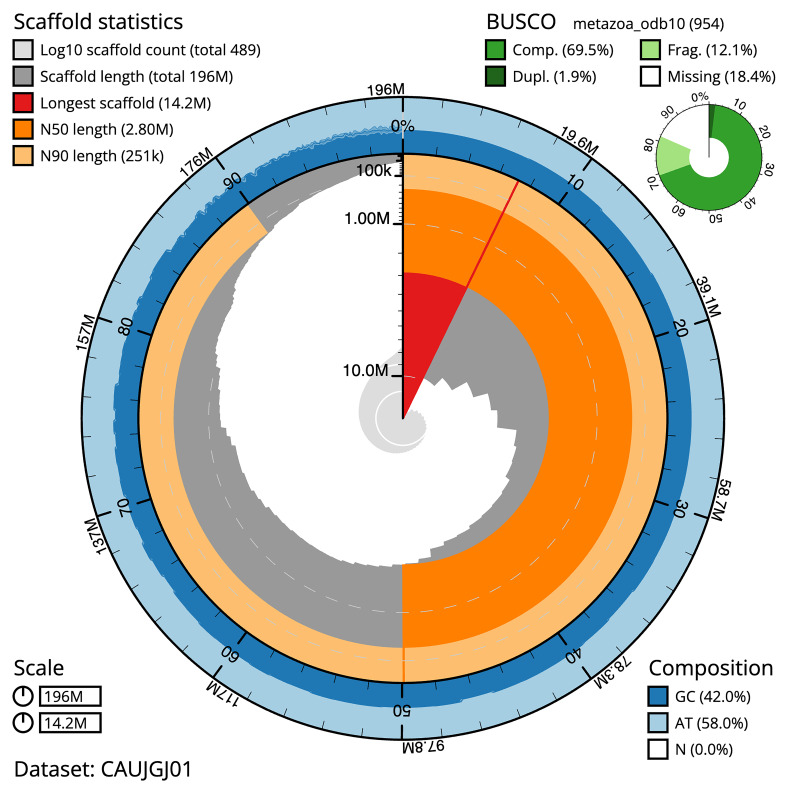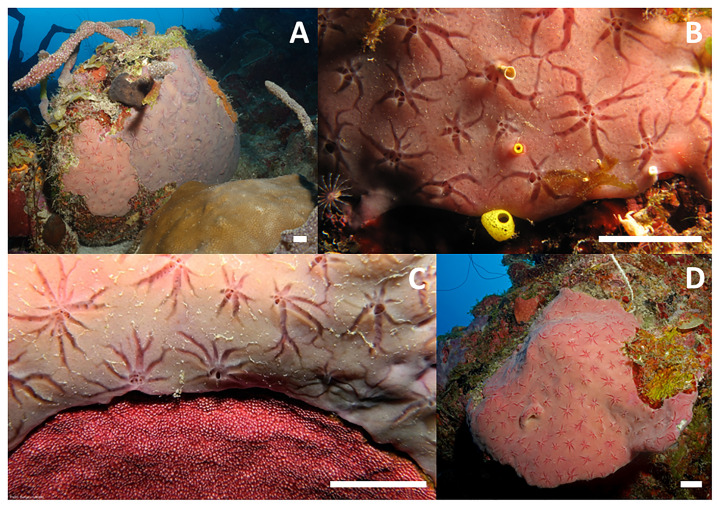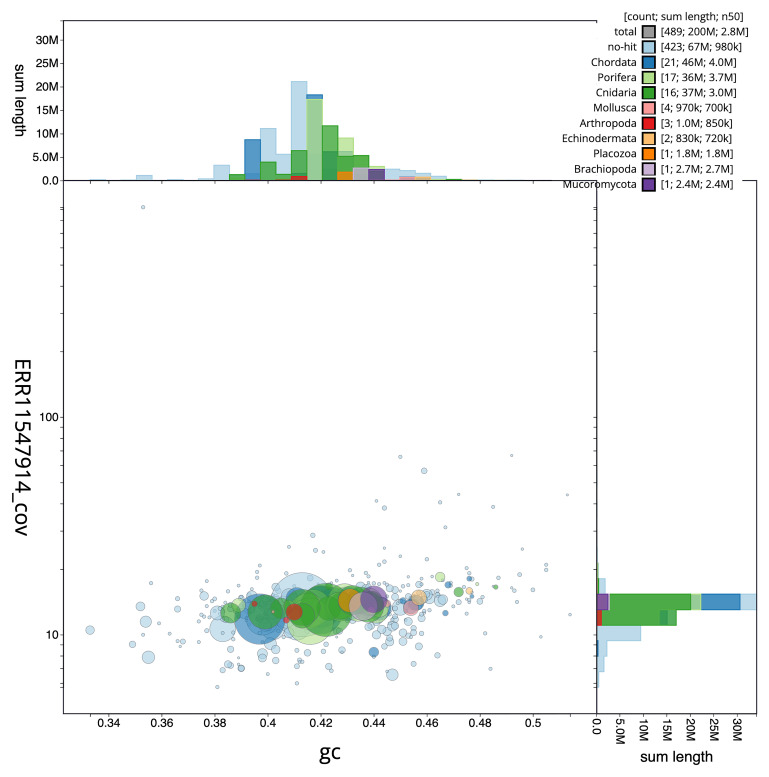覆盖海绵支架水平基因组序列,Halisarca caerulea Vacelet & Donadey, 1987,及其相关微生物宏基因组序列。
Q1 Medicine
Wellcome Open Research
Pub Date : 2025-07-09
eCollection Date: 2025-01-01
DOI:10.12688/wellcomeopenres.24281.1
引用次数: 0
摘要
我们提出了一个支架水平的基因组组装从haisarca caerulea标本(包壳海绵;Porifera; Demospongiae; Chondrillida; Halisarcidae)。基因组序列全长195.70兆碱基。线粒体基因组也已组装完毕,长度为19.15千碱基。该组合在Ensembl上的基因注释鉴定出26,722个蛋白质编码基因。对标本进行宏基因组组装,鉴定出与相关海绵共生体分支Alphaproteobacteria bacterium GM7ARS4和Gammaproteobacteria bacterium AqS2 (Tethybacterales)相关的4个细菌基因组。本文章由计算机程序翻译,如有差异,请以英文原文为准。



The scaffold-level genome sequence of an encrusting sponge, Halisarca caerulea Vacelet & Donadey, 1987, and its associated microbial metagenome sequences.
We present a scaffold-level genome assembly from a Halisarca caerulea specimen (encrusting sponge; Porifera; Demospongiae; Chondrillida; Halisarcidae). The genome sequence is 195.70 megabases in span. The mitochondrial genome has also been assembled and is 19.15 kilobases in length. Gene annotation of this assembly on Ensembl identified 26,722 protein-coding genes. The metagenome of the specimen was also assembled and four binned bacterial genomes related to the relevant sponge symbiont clades Alphaproteobacteria bacterium GM7ARS4 and Gammaproteobacteria bacterium AqS2 ((Tethybacterales) were identified.
求助全文
通过发布文献求助,成功后即可免费获取论文全文。
去求助
来源期刊

Wellcome Open Research
Biochemistry, Genetics and Molecular Biology-Biochemistry, Genetics and Molecular Biology (all)
CiteScore
5.50
自引率
0.00%
发文量
426
审稿时长
1 weeks
期刊介绍:
Wellcome Open Research publishes scholarly articles reporting any basic scientific, translational and clinical research that has been funded (or co-funded) by Wellcome. Each publication must have at least one author who has been, or still is, a recipient of a Wellcome grant. Articles must be original (not duplications). All research, including clinical trials, systematic reviews, software tools, method articles, and many others, is welcome and will be published irrespective of the perceived level of interest or novelty; confirmatory and negative results, as well as null studies are all suitable. See the full list of article types here. All articles are published using a fully transparent, author-driven model: the authors are solely responsible for the content of their article. Invited peer review takes place openly after publication, and the authors play a crucial role in ensuring that the article is peer-reviewed by independent experts in a timely manner. Articles that pass peer review will be indexed in PubMed and elsewhere. Wellcome Open Research is an Open Research platform: all articles are published open access; the publishing and peer-review processes are fully transparent; and authors are asked to include detailed descriptions of methods and to provide full and easy access to source data underlying the results to improve reproducibility.
 求助内容:
求助内容: 应助结果提醒方式:
应助结果提醒方式:


